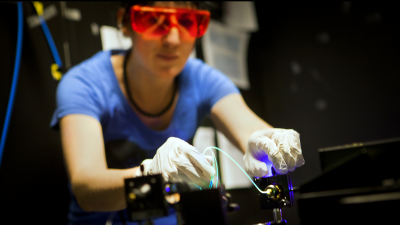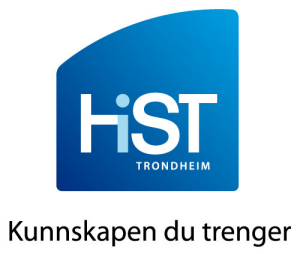Photonics research at STC
The research within photonics at STC is mainly focused on the development of new optical fiber baser laser sources and fiber optic sensors for industrial and medical applications. The development of optical fiber based laser sources is in turn divided in two application areas – improving the laser glass material of the optical fibers for higher efficiency and reliability and to develop new fiber based laser sources in collaboration with industrial partners.
Research within fiber optic sensors is focused on two application areas – the development of new pH sensitive materials that can be deposited on optical fibers for measurements in e.g. blood and fiber optic sensors based on deposition of nano-particles.
Development of optical fiber based laser sources for industrial applications
The work during 2011 has been focused on further improvement of reliability of active optical fibers used in fiber based laser sources. PhD-student Sara Rydberg has investigated the mechanisms causing radiation (UV & X-ray) induced losses in optical fibers leading to a reduced operational lifetime for the lasers. The general route has been to investigate radiation induced losses in well-known laser materials, e.g. Yttrium Aluminum Garnet (YAG) crystals and compare with induced losses in optical fiber glass material. The work has resulted in an increased understanding of the complex mechanisms causing increased losses in optical fibers.
Work has also been made to develop fiber based laser sources using the new and improved optical fibers. This activity has been initiated during 2011 and is made in cooperation with laser manufacturers (Cobolt and Optoskand) and several end users e.g. Laser Nova in Östersund and LaserCut in Hudiksvall. One example of an ongoing activity is a fiber based laser operating at 488nm in the blue-green spectral range. This is interesting from an industrial point of view as it can replace bulky and highly energy consuming Argon-ion gas lasers. The activities will continue until 2014 in a three year EU-founded R&D project in collaboration with regional and national industrial partners.

PhD-student investigates the mechanisms causing radiation (UV & X-ray) induced losses in optical fibers leading to a reduced operational lifetime for the lasers.
Fiber optic sensors for industrial and medical applications
Research activities is made in collaboration with Acreo and Uppsala University to develop a new pH-sensitive material that is non-toxic, has high reproducibility and with good optical properties. Tests have been made to apply the pH-sensitive material on optical fibers, both in regard of pH sensitivity and adhesion. Continuous work is conducted to improve the material on all aspects.
The group has also established contact with Högskolan i Sör Tröndelag (HIST). Together we will apply for founding in research areas where we have mutual intrest.
Work has also been made to investigate how light in optical fibers can be influenced by deposition of nano-particles near the fiber core. Different methods have been used to deposit the nano-particles and the most promising method has shown to be the so called “Evaporation Induced Self-Assembly” (EISA) method. Preliminary optical measurements have been made and compared with simulations.
Fiber optical sensors are believed to have a much larger role in industry and in the medical area. This is due to the insensitivity of light when it comes to electromagnetic disturbance, and high sensitivity.




